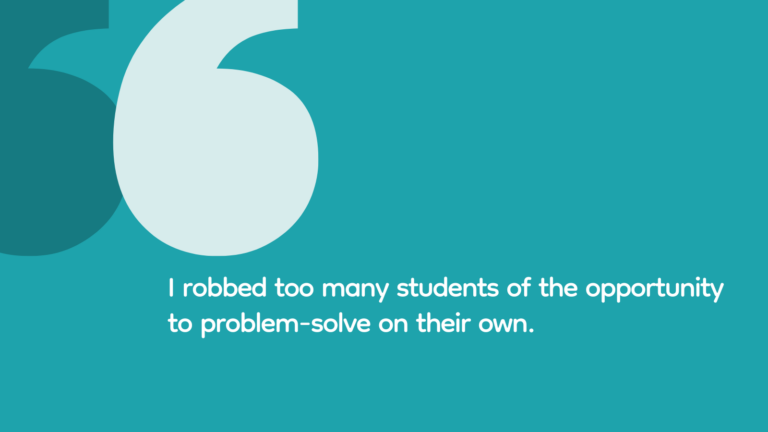We’ve all had those students. They sit in their chair and do absolutely nothing for an entire class period. Chances are, we’ve tried many ways to engage them…rewards, punishments, phone calls home, poor grades on progress reports, even giving them supplies to do the work…yet try as we might, we can’t seem to get through to them.
Sound familiar? I’ve been there with my sixth graders. As educators, we’ve all done a lot of worrying about these students. We feel obligated to do whatever we can to help them. And now I think it’s time to get the students involved, too. Here are my five strategies to get students involved in increasing ownership in the classroom. These methods have really worked for me, and I hope they help you, too.
1. Use FOMO to Your Advantage
Nearly all students can identify with FOMO—Fear of Missing Out. So to make learning interesting where other students actually WANT to get involved, try these ideas. First, hang up signs that give hints as to what you’re going to be studying. For example, if you’re going to do a unit on Alexander Hamilton, you could just take phrases or quotes from the musical. Don’t tell your students what’s to come or even acknowledge the signs. Just give clues to get them engaged and guessing. Another idea is to offer little prizes like tardy passes, extra credit points, or late work passes for those who volunteer to answer questions in class. Both of these ideas will get students engaged because they see others participating. Best of all, it requires little on your part.

2. Give Students Choices When it Comes to Classwork
Students love having choices. It gives them a sense of control and allows them to work on things they know they’re good at doing. This method worked really well in my Learning Strategies class last year . We were using the picture book, Miss Rumphius, and one of the choices for the assignment was to draw the main idea. Well, one student asked if they could paint instead, which I definitely agreed to, and then it got several other students excited about painting, too.
Creating choices (or menus) can come in all shapes and sizes. One of my favorite ways to offer this is through Tic-Tac-Toe. Students can choose any three activities in a row to complete. I just make sure that they’re learning the concepts I want them to learn, and the sense of ownership they have had has been wonderful.
3. Have Students Self-Assess
Students who do not seem to care about their work may become more involved when they are grading themselves. Just completed a unit on figurative language? Great! Have students put together a portfolio (digital or paper) that gives examples of each kind of figurative language being used according to a scale. Another idea is to have your students contribute test questions. One more strategy is to have students write down answers to a study guide on an index card, and then let them use it for the test. They will think they are getting a special advantage, and it will help them retain the information.
What about a longer written piece or an oral presentation? Students can grade themselves with the same rubric you would use the grade them. The caveat is that the student has to underline the sentences in the piece or speech that match the rubric. In my class, I’ve had students use color-coding so that all evidence was underlined or highlighted in blue and commentary was underlined or highlighted in green, for example. This makes it easy for me to see if I agree with my students’ self-assessments. Sometimes I agree and sometimes I don’t. When I do not agree with a student’s grade, the student is allowed to revise the work to get the grade they initially believed they earned.
4. Make Learning Interactive
Teachers know that students will get involved if the learning matters to them. And what matters quite a bit to students these days is their digital world—they treasure interactive content. Some examples of interactive content that teachers can use in the classroom include Digital Playlists, Hyperdocs, Google Docs, and Sketchnotes. I’ve actually created something called Pixanotes, which you can download for free on my TeachersPayTeachers site. This is differentiated picture notes, combining interactive notebooks and traditional notes. I created this after reading an interesting research article that said pictures increase comprehension and retention of information.

5. Try Cooperative Learning
As teachers, we’ve heard about cooperative learning for years. The trouble is, many of us have had to try and figure out how to ensure the learning part is actually taking place instead of irrelevant socialization. Of course we can check for understanding with individual exit tickets, quizzes or other formative assessments, and even give all the students in the group a group grade, but there is one strategy that I think finally puts the onus for cooperative learning where it belongs—on the student. I call the idea “fair grading.”
In this approach let’s say there are three students in a group and their work earned an 80 based on the rubric. I give the group 240 points to divvy up. If they all agree that everyone completed equal work, then they will each earn an 80. Otherwise they can have healthy debate and grades will be negotiated amongst the group members—but not with me, as I am not part of the group. This makes students whose performance was less than optimal take responsibility for their lack of work, which is at the heart of students taking ownership! I have personally used this method for over 15 years and have never had a student or parent complain that the grade wasn’t fair.
Teachers see potential in every student. This is why we work the long hours and go the extra mile. However, we need to remember that the students also need to work the long hours and go the extra mile. We can help them, but they must do their part and hopefully these strategies will help them do just that.

